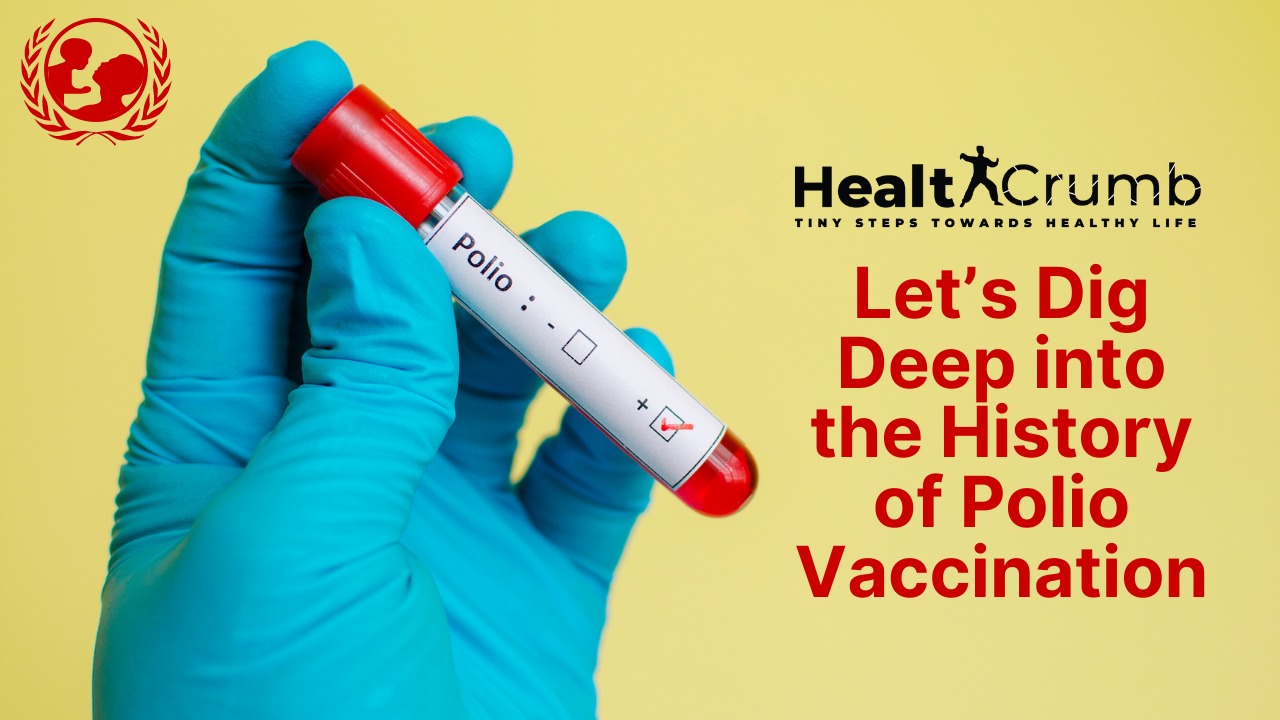What was once a crippling and deadly disease has now largely been eradicated thanks to the hard work of many people, including scientists and public health officials. Here’s a look back at the history of polio vaccination and its role in preventing the disease from spreading further.
Polio: What is it?
Polio is a viral disease that mainly affects young children. It is caused by the poliovirus, a member of the family of viruses that includes the common cold and the flu.
Polio symptoms may include fever, headache, neck stiffness, muscle pain, and paralysis.
The virus can be spread through contact with respiratory secretions (such as saliva or mucus) from an infected person, through contaminated food or water, or through contact with surfaces (such as doorknobs, door handles, or countertops) that have been contaminated with the virus.
The World Health Organization (WHO) estimates that approximately 350 million people worldwide are currently infected with polio. Each year, about 1 in 200 people will develop paralytic polio after being infected with the poliovirus.
There is no specific treatment for polio; however, most people who get infected will recover without any long-term effects if they get timely treatment. In some cases, however, polio may lead to permanent paralysis.
The best way to prevent polio is to get vaccinated against the poliovirus. The WHO recommends that all children aged 12 months or older receive at least one dose of the poliovirus vaccine.
The History of Polio Vaccination in the United States
Polio vaccination has been a vital part of public health for over 50 years.
Polio vaccine development began in the early 1900s, when scientists began working on a vaccine to protect against the virus.
In 1916, a pediatrician by the name of Sabin developed an oral poliovirus vaccine that was later licensed for use in humans by the U.S. National Foundation for Infantile Paralysis (NFIP).
Their early efforts failed, however, and it wasn’t until 1937 that researchers developed a successful polio vaccine.
Polio was once common throughout the world, but thanks to the efforts of doctors and scientists, polio has been virtually eliminated from most countries.
In 1955, Jonas Salk developed the polio vaccine, and it was quickly brought to market by pharmaceutical giants like Merck & Co.
This vaccine helped to protect those children from getting polio and also saved many lives.
Over the next few decades, additional vaccines were developed and commercialized, helping to prevent an estimated 350 million cases of polio worldwide.
Since then, there have been several additional vaccines developed for use against poliovirus. These vaccines are administered to infants and young children as part of their routine childhood vaccinations. The benefits of these vaccines are clear: they help to prevent infections with poliovirus and save lives.
The vaccine turned out to be remarkably effective, preventing almost 100 percent of cases of poliomyelitis (polio) in children who received it as part of their routine childhood vaccines.
The Polio vaccine campaign was a success, and within just a few years, rates of infection had plummeted by over 99%. However, there were still pockets of the world where poliovirus continued to circulate unchecked.
The Polio Eradication Campaign
The Polio Eradication Campaign is one of the most successful public health campaigns in the history of polio vaccination.
It began in 1955 and was ultimately successful in wiping out the disease from the world.
The Polio Eradication Campaign was led by the World Health Organization (WHO) and involved numerous countries working together to eradicate polio.
There were once over one hundred thousand cases of polio each year, but thanks to the Polio Eradication Campaign, that number has decreased to only a few hundred cases annually.
The campaign was a huge success because it relied on prevention, including sanitation and hygiene campaigns, rather than cure. By vaccinating children against polio, the campaign was able to prevent the virus from spreading, leading to its ultimate eradication.
In 1986, the success of this campaign led to the creation of the National Childhood Vaccine Injury Act (NCVIA), which mandated that manufacturers provide free vaccines for children who had been injured by them. Additionally, the NCVIA provided funds for research into new vaccines and improved safety measures for existing vaccines.
In 1988, Rotary International initiated its Global Polio Eradication Initiative (GPEI) with the goal of eradicating poliovirus from every country on Earth by 2000.
Thanks to the hard work and dedication of Rotarians around the world, we reached our goal exactly 12 years later! What an incredible achievement!
The global eradication campaign to eliminate polio began in 1988 and was declared successful in 2003.
Today, the Polio vaccine is one of the most effective medical interventions available and has saved countless lives.
Polio Vaccination Worldwide
Polio is a potentially deadly disease that can be prevented with the help of a vaccine. The history of polio vaccination is full of both triumph and tragedy, but it is an important part of the world’s fight against this disease. Here are four interesting facts about polio vaccine history:
- The polio vaccine was first developed in the 1940s by Dr. Jonas Salk.
- The first polio vaccine was successfully tested on humans in 1955, and was approved for use by the World Health Organization (WHO) in 1961.
- There were initially concerns that the vaccine might cause serious side effects, but those fears were eventually unfounded.
- More than two billion people have been vaccinated against polio since 1961, making it one of the most successful vaccines in history.
Side Effects of Polio Vaccine Immunization
The disease was once common throughout the world but has since been virtually eradicated thanks to widespread immunization with the polio vaccine.
However, there are still some areas of the world where polio is endemic and can be life-threatening.
The Polio Vaccine Initiative (PVI) is a global effort spearheaded by the World Health Organization (WHO) to eradicate polio completely by 2018.
The PVI has made significant progress lately, with polio cases worldwide dropping by more than two-thirds since 2013.
However, there are still some areas of the world where polio is endemic, and immunization rates remain low.
One of the main reasons why rates of immunization against polio remain low in many parts of the world is due to side effects associated with the vaccine.
Side effects are generally mild but can include fever, rash, headache, nausea, and vomiting. In very rare cases, side effects can be more serious and may include convulsions, paralysis, and even death.
Despite these side effects, however, immunization with the polio vaccine remains one of the most effective methods for eradicating this disease.
In areas where the vaccine is available, it is highly recommended for all individuals aged 1 year or older to receive a dose of the vaccine.
How Polio is Eradicated
In the past, it was a leading cause of death among young children in the developing world. However, thanks to the dramatic work of scientists and doctors over the last several decades, polio has been eradicated from most of the world.
The World Health Organization (WHO) reports that only three countries – Afghanistan, Nigeria, and Pakistan – are still affected by polio.
The history of polio vaccination is an incredibly inspiring story of human determination and innovation. While it’s unfortunate that polio remains a problem in some parts of the world, it’s clear that we have made great progress in fighting this disease.
Let’s take a closer look at how polio was eradicated and what role vaccines played in this success story.
In the 1940s, Polio vaccine was developed by Dr. Jonas Salk.
At first, it was considered too dangerous for humans to be vaccinated with, as the virus contains a high amount of deadlier viruses.
In the 1950s and 1960s, there was a lot of research being done on polio vaccine to find a way to prevent its spread.
Thanks to the hard work of scientists and volunteers, we now have one of the most successful public health campaigns in history: when used appropriately, polio vaccine has prevented more than three million cases of paralytic polio worldwide since 1988.
Conclusion
Polio is a virus that can cause paralysis in people of all ages. It is a very unfortunate disease, but fortunately, we have had the pleasure of living in an age where polio has been largely eliminated from the world.
However, there are still cases of wild poliovirus circulation from time to time. Globally there were 123 confirmed cases of wild poliovirus in 2016-2017.
Today, polio is only found in very remote parts of the world, and the United States has made significant progress in eradicating it.
With the help of vaccines and other health interventions, including sanitation and hygiene campaigns, polio is on the verge of being eliminated from the world once again.



